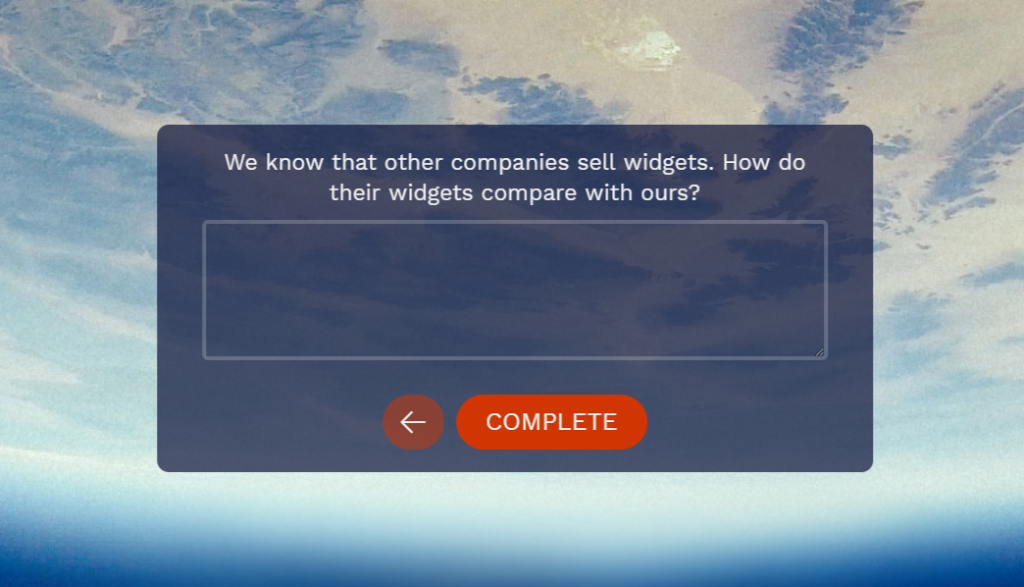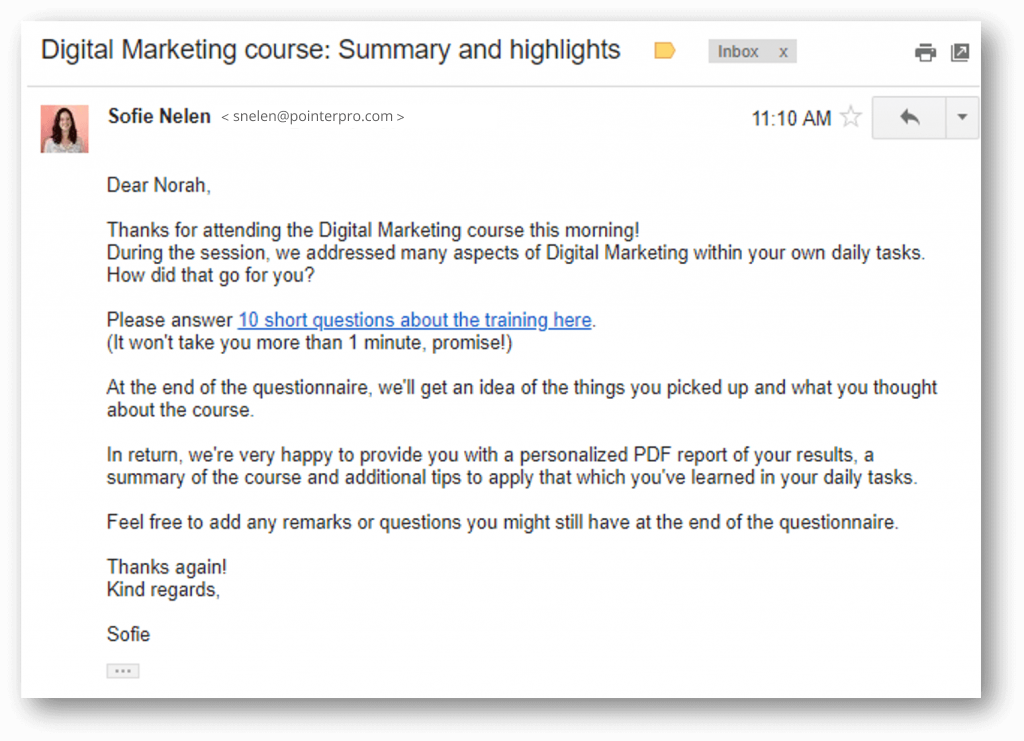Customer feedback is always fruitful, whether you manage a large corporation or a small startup. You could be trying to get feedback on ways you can improve, or maybe you just want to know how their last interaction with you went.
Either way, surveys are growing in popularity when it comes to collecting feedback. In our increasingly fast-paced and digital world, consumers have grown passive to the massive amounts of things they are being asked to do by corporations and media brands. Still, a well-designed survey lets you to create a connection between you and your audience. And if you distribute the survey through email, this adds diversification to your email marketing strategy: a survey is more interactive than the static content that is usually sent through emails.
By asking for their opinion, you engage and interact with them in a way that is personalized and empowering — if done the right way.
Reconnect and establish trust
If a customer did business with you at some point in the past, there must have been something about your business they liked.
And Ideally, whatever they liked hasn’t gone away. So, find out what that is and why they left.
But to reel them back in, you can’t just ask for a favor. What are they going to get out of it? That’s precisely what they’ll be asking themselves. Consider a next-purchase discount or another incentive next time you send them a survey.
“Tell us what we could have done differently and we’ll give you the extra-deep, friend of the family discount on your next purchase.”
Realistically, the people who respond might just be in it for the free or discounted goods. But as soon as you entice them with that, you’ve got the opportunity not just to bring them back into the fold, but to create advocates.
Reconnect for follow-through & execution
Let’s be clear: the point is not to get your customers back to meet your year-end of quarter goals. Your goal in reconnecting through surveys is to build a customer who isn’t just going to come back but is going to come to you time and time again. You want them to talk about you to their friends, colleagues, and family. You want them to leave rave reviews.
This means asking pointed questions that you can actually follow through on. Questions like “What did you like about us?” or “What more can we do for you?” are good, and important, of course.
But you also need pointed, actionable questions.
“How fast was your checkout experience?”
“Is there something you wish we sold?”
“How easy is it to shop in our online store?”
Dave Nevogt from Hubstaff.com told Huffington Post, “The key to getting feedback from customers is to make sure they understand that you’re actually going to act on the suggestions they give.”
This means letting them know before they even see the survey that you want to make the changes they are going to suggest.
Don’t overlook the possibility of using a significant date to reach out to the customer. Following up at six months or a few weeks before the standard warranty expires is a great way to put some context around your outreach and your survey.
Reconnect and rethink the format
If this is the first time you are trying out a consumer-facing survey, don’t make the rookie mistake of asking too much.
A good rule of thumb is to keep your survey to five questions or less. Send the survey or survey link within the body of a personalized email.
Powerful email platforms now allow you to personalize emails so people will see their names in them. Anymore, personalization isn’t just a “Nice to Have.” It’s a “Must Have.”
Reconnect and be direct
You know who your competition is, so be open and honest. Within your surveys, ask your consumers what they think of your competitor, and what they do better or worse than you.

This kind of openness and honesty is refreshing and helps establish and reinforce loyalty. Once more establishes trust and loyalty. If your consumers know they can talk to you openly, they’ll feel closer to you. Furthermore, who better is there to ask about what your competition is doing or how your customers perceive your competition differs from you. It never hurts to keep an eye on them.
Finally, maybe your lost consumer simply needs to be asked to come back. The candor of asking a question along the lines of “What can we do to win you back as a customer?” can be refreshing. At worst, the respondent says nothing. But the question can also provide a wealth of information that gives you insights on that former customer’s changed buying motivations, emerging needs and much more.
Get the basics right
Digital strategist Neil Patel provides great guidance for surveying in his “Survey Questions That Work: Unlock Your Customers’ Deepest Desires.”
Most significantly, he reminds us to KISS.
In fact, variations of the phrase KISS (Keep It Simple, Stupid) read “Keep It Simple and Straightforward” and “Keep It Short and Simple.”
So, to get respondents to answer your questions, keep it simple, short, and straightforward.
Assume that you’ve got a limited amount of goodwill or willingness to share with your recipients. Pick a couple of questions and make sure your template and the questions themselves are easy to understand. Ideally, getting your entire survey onto one or two pages increases your chances of getting a completion.
Studies have shown that response rates can drop by up to 17% when the survey completion stretches beyond minutes or 12 questions. This isn’t an absolute, of course. And building a survey of six open-end questions isn’t twice as likely to be completed as a survey of 12 Likert-scale questions. Instead, the admonishment to “keep it short, simple, and straightforward: should serve as guidance for the complexity of your questions.
Check out these 34 tips on how to improve your survey response rate.
Keeping in mind that you’re reaching out to former customers, the quicker you get to the point, and the easier the questions are to understand, the better your chances are of securing a completed survey with useable data. And while it should go without saying, optimizing your survey for readability and completability on a mobile screen should be a priority.
Finally, make sure that capture your survey-based outreach in your customer relationship management system. Integrating your survey tools with your CRM is easily accomplished, and helps create a richer picture of your relationship with every prospect, lead, and customer.
Surveys, when done properly, can be the ultimate customer power tool. You can use them for market research, sales, public relations, customer service, and finance. And just like your customers impact every area of your organization, what you learn from surveys has the potential to touch every aspect of your organization, too.






One Response
Neha Tandon, thanks for the article post.Really thank you! Great.